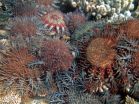Auto experts recognize cars like most people recognize faces
2012-10-02
(Press-News.org) When people – and monkeys – look at faces, a special part of their brain that is about the size of a blueberry "lights up." Now, the most detailed brain-mapping study of the area yet conducted has confirmed that it isn't limited to processing faces, as some experts have maintained, but instead serves as a general center of expertise for visual recognition.
Neuroscientists previously established that this region, which is called the fusiform face area (FFA) and is located in the temporal lobe, is responsible for a particularly effective form of visual recognition. But there has been an ongoing debate about whether this area is hard-wired to recognize faces because of their importance to us or if it is a more general mechanism that allows us to rapidly recognize objects that we work with extensively.
In the new study published this week in the online early edition of the Proceedings of the National Academy of Sciences, a team of Vanderbilt researchers report that they have recorded the activity in the FFAs of a group of automobile aficionados at extremely high resolution using one the most powerful MRI scanners available for human use and found no evidence that there is a special area devoted exclusively to facial recognition. Instead, they found that the FFA of the auto experts was filled with small, interspersed patches that respond strongly to photos of faces and autos both.
"We can't say that the same groups of neurons process both facial images and objects of expertise, but we have now mapped the area in enough detail to rule out the possibility of an area exclusively devoted to facial recognition," said Rankin McGugin, who conducted this research as part of her doctoral dissertation.
According to Isabel Gauthier, the David K. Wilson Chair of Psychology, who directed the study, the demonstration that the FFA can support expertise for other categories may help scientists improve treatments for people who have difficulty recognizing faces, like individuals with autism. In addition, identifying the neural basis of individual differences in learning visual skills is an important step toward mapping the brain chemistry involved in learning may eventually lead to the development of drugs that make it easier for individuals to acquire different kinds of visual expertise.
For most objects, research has shown that people use a piecemeal identification scheme that focuses on parts of the object. By contrast, experts, for faces or for cars, use a more holistic approach that is extremely fast and improves their performance in recognition tasks.
The scientists point out that visual expertise may be more the norm than the exception: "It helps the doctor reading X-rays, the judge looking at show dogs, the person learning to identify birds or to play chess; it even helped us when we learned brain anatomy!" Gauthier said.
Gauthier and her colleagues have further found that people who are better at learning to recognize one subject should also be better at learning another. Recent work by her group found that those who did a better job at identifying objects in which they were most interested were also better at identifying faces.
###
Christopher Gatenby at the University of Washington and John Gore, director of Vanderbilt's Institute of Imaging Science, also contributed to the study. The research was supported by the James S. McDonnell Foundation, National Science Foundation grant SBE-0542013, National Eye Institute grant EY013441-06A2 and the Vanderbilt Vision Research Center.
ELSE PRESS RELEASES FROM THIS DATE:
2012-10-02
OAKLAND, Calif. — A study of almost 200,000 young females who received the quadrivalent human papilloma virus (HPV4) vaccine found that immunization was associated only with same-day syncope (fainting) and skin infections in the two weeks after vaccination. These findings support the general safety of routine vaccination with HPV4 in a clinical care setting to prevent cervical and other genital and reproductive cancers.
The association between HPV4 and syncope was not unexpected, the researchers noted, because injections in general are known to have a correlation to fainting, ...
2012-10-02
"Questions have been raised if restricting nuclear energy – an option considered by some countries after the accident in Fukushima, Japan – combined with climate policies might get extremely expensive. Our study is a first assessment of the consequences of a broad range of combinations of climate and nuclear policies," lead author Nico Bauer says. Restrictions on nuclear power could be political decisions, but also regulations imposed by safety authorities. Power generation capacities would have to be replaced, but fossil fuels would become costly due to a price on CO2 ...
2012-10-02
The Great Barrier Reef has lost half its coral cover in the last 27 years. The loss was due to storm damage (48%), crown of thorns starfish (42%), and bleaching (10%) according to a new study published in the Proceedings of the National Academy of Sciences today by researchers from the Australian Institute of Marine Science (AIMS) in Townsville.
"We can't stop the storms but, perhaps we can stop the starfish. If we can, then the Reef will have more opportunity to adapt to the challenges of rising sea temperatures and ocean acidification, says John Gunn, CEO of AIMS.
...
2012-10-02
University of Leeds-led research has used tree rings from eight cedar trees in Bolivia to unlock a 100-year history of rainfall across the Amazon basin, which contains the world's largest river system.
The new study shows that the rings in lowland tropical cedar trees provide a natural archive of data closely related to historic rainfall.
Researchers measured the amounts of two different oxygen isotopes trapped in the wood's rings: oxygen-16 and the heavier oxygen-18. By looking at the varying amounts of the two isotopes, they could see how the pattern of rainfall ...
2012-10-02
[Barriers to cervical screening in women who have experienced sexual abuse: an exploratory study 2012; 38: 214-20 (Research)
The effect of childhood sexual abuse on women's lives and their attitudes to cervical screening 2012; 38:1-2 (Editorial)]
Women who have been sexually abused as children or young adults are much less likely to get screened for cervical cancer than other women, indicates exploratory research published in the Journal of Family Planning and Reproductive Health Care.
Figures published last year by the national NHS Cervical Cancer Screening Programme ...
2012-10-02
October 1, 2012 — (Bronx, NY) — In sharp contrast to previous studies suggesting that errors account for the majority of retracted scientific papers, a new analysis—the most comprehensive of its kind—has found that misconduct is responsible for two-thirds of all retractions. In the paper, misconduct included fraud or suspected fraud, duplicate publication and plagiarism. The paper's findings show as a percentage of all scientific articles published, retractions for fraud or suspected fraud have increased 10-fold since 1975. The study, from a collaboration between three ...
2012-10-02
Diseases that progressively destroy nerve cells in the brain or spinal cord, such as Parkinson's disease (PD) and amyotrophic lateral sclerosis (ALS), are devastating conditions with no cures.
Now, a team that includes a University of Iowa researcher has identified a new class of small molecules, called the P7C3 series, which block cell death in animal models of these forms of neurodegenerative disease. The P7C3 series could be a starting point for developing drugs that might help treat patients with these diseases. These findings are reported in two new studies published ...
2012-10-02
A seemingly unique part of the human and mammalian brain is the neocortex, a layered structure on the outer surface of the organ where most higher-order processing is thought to occur. But new research at the University of Chicago has found the cells similar to those of the mammalian neocortex in the brains of birds, sitting in a vastly different anatomical structure.
The work, published in Proceedings of the National Academy of Sciences, confirms a 50-year-old hypothesis about the identity of a mysterious structure in the bird brain that has provoked decades of scientific ...
2012-10-02
PHILADELPHIA — Whether human or baboon, it helps to have friends. For both species, studies have shown that robust social networks lead to better health and longer lives. Now, a team of University of Pennsylvania researchers has helped show that baboon personality plays a role in these outcomes, and, like people, some baboons' personalities are better suited to making and keeping friends than others.
The research was conducted by psychology professor Robert Seyfarth and biology professor Dorothy Cheney, both of Penn's School of Arts and Sciences. They collaborated with ...
2012-10-02
A SIMPLE blood test could one day be a more accurate way to test for the early signs of breast cancer than using mammograms to spot a lump say researchers today (Tuesday), as Breast Cancer Awareness Month gets underway.
They also hope the blood test could improve treatment by detecting whether breast cancer patients are likely to relapse and what drugs their particular type of tumour will respond to.
This pioneering new clinical study – funded by Cancer Research UK in collaboration with the University of Leicester and Imperial College London – is about to start in the ...
LAST 30 PRESS RELEASES:
[Press-News.org] Auto experts recognize cars like most people recognize faces

